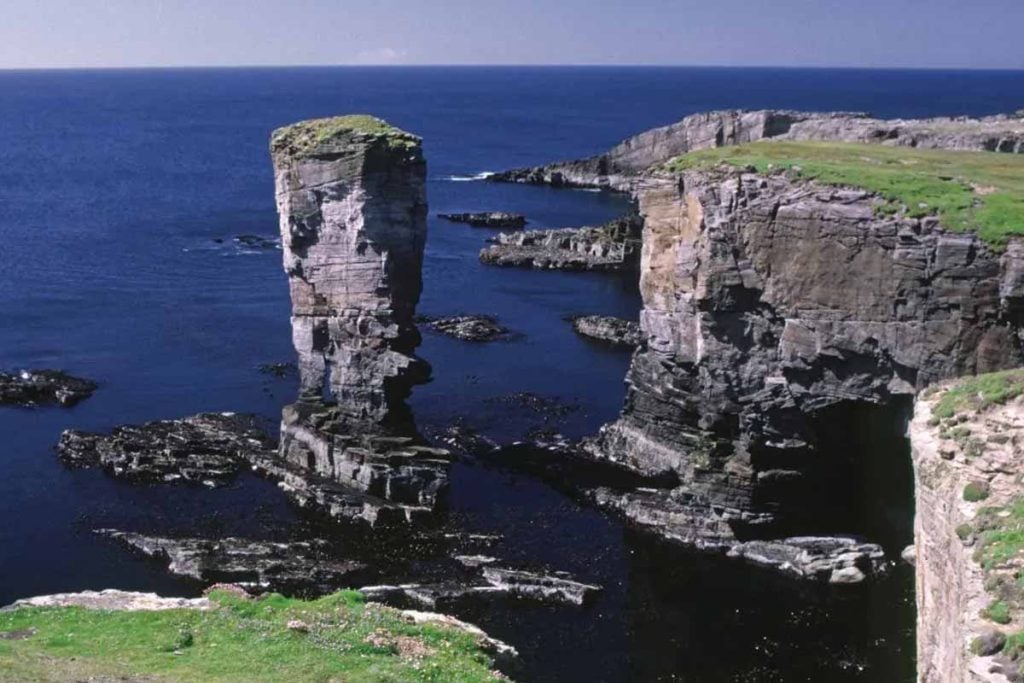A vast silhouette rose from the gloom, then glided back with effortless power. The sight left seasoned divers silent. Today’s footage shows a rare giant in its element, and it brings hope. It also raises hard questions about how to protect it. Although legends still swirl, this is different. We are watching a living ocean creature whose future rests on careful choices and patient science. Shared will must guard wild seas.
Understanding this ocean creature and its scale
The subject is a flapper skate, a critically endangered ray often mistaken for myth in dim water. It is the largest European skate, and Orkney’s clean, current-swept seafloors still host a few. In recent footage, the fish angles toward the lens, turns, then banks away like a silent craft.
Compared with household furniture, the outline rivals a king-size bed, which helps people picture it safely. Numbers refine: over 8.2 feet long and above 225 pounds, with wings near two meters across. The Orkney Skate Trust reports maxima around 2.5 meters nose to tail and weights beyond 100 kilograms.
Local divers describe the profile as spaceship-like, because broad pectoral fins seem to hover more than beat. That shape saves energy while patrolling reefs and sand flats. The same design lets this ocean creature surge to pin injured fish. That keeps food webs cleaner and reduces disease in ecosystems.
Life cycle, slow reproduction, fragile momentum
According to NatureScot, this skate grows slowly and invests heavily in each offspring. It may take about ten years to reach sexual maturity, then adults produce very few young. Eggs develop inside tough cases, often called mermaid’s purses, which lie hidden on the seabed while currents bring oxygen.
Incubation demands patience: embryos may need up to eighteen months to hatch. Compared with a deep-sea Pacific relative whose eggs can take about four years, that still feels long nearshore. Meanwhile, trawls and anchors can crush cases and wipe out future generations before a fin even beats.
Once abundant, the species declined with overfishing and bycatch; it is now critically endangered in the UK. Since recovery relies on long lives and slow recruitment, every adult matters. This ocean creature needs handling and selective gear. It also needs zones where breeding grounds stay undisturbed by gear or intrusions.
How everyday choices protect this ocean creature locally
Divers familiar with Orkney describe a patient hunter that trims waste from food webs by taking weak fish. That role limits disease and keeps energy moving through reefs and banks. Marine biologist Daniel Wise says balance is hard to restore once it slips, so steady protections bring the best results.
Practical steps add up. Avoid gear that scrapes seabeds where egg cases rest; lift anchors in clean water instead of dragging. Share locations of large skates only with trusted scientists. When chance brings a clear view, keep distance, stay low, never chase; stress can force a heavy ray to waste energy.
Community science helps. The Orkney Skate Trust asks people to report sightings and mermaid’s purses, because records reveal nursery zones. Those maps guide safeguards for habitat. With reports and a lighter touch at sea, this ocean creature gains time. That time supports recovery shaped by long lives, not fast reproduction.
Policy shifts and what new video changes
Footage matters because real images shift attention from myths toward evidence. BBC Countryfile highlighted the Orkney clip, which shows the fish turning and sweeping toward the camera before sliding past. That sequence delivers scale, behavior, and context in seconds, giving conservation teams material that speaks clearly beyond specialist reports.
Authorities in Scotland have created protected areas for flapper skates, and early signs suggest slow recovery. Protection works best with improved gear, seasonal closures, and outreach to crews, because rules must hold for decades. These rays can live over fifty years; plans need patience and predictable budgets, not pilots.
The Orkney Skate Trust calls the species the world’s largest skate. Researchers list it as Europe’s largest. Either way, scale shapes strategy. Managers must space closures wide enough for an ocean creature and still leave corridors for boats. That keeps conflict low and keeps coastal economies part of the solution.
Why Orkney offers refuge and sustained stewardship
Orkney sits north of Scotland’s mainland, where cool tides, rocky reefs, and ample prey create a stronghold for wide-ranging skates. Fewer fishing pressures help as well. Conservationists stress that rare sightings here do not echo the Nessie myth. This animal is real, monitored, and visible when conditions finally line up.
Commercial diver and marine biologist Daniel Wise has logged hours with flapper skates underwater; he knows the luck involved. With low numbers, each close pass feels like a once-in-years moment. He says that when a system slips out of balance, recovery needs time, clear rules, and citizens who keep faith.
That patient outlook shapes research too. Teams map egg-laying grounds and test gentle methods so work does not disturb what they study. Reports show cautious gains where closures and gear changes persist. Because the ocean creature lives long, steady protection can rebuild age structure, and older breeders then anchor resilience.
What this rare encounter signals for coastal stewardship
Images like these feel thrilling because they prove what careful work can protect. A single glide concentrates years of surveys, conversations with skippers, and many reports into one vivid moment. If watchers share sightings, and crews avoid fragile grounds, this ocean creature gains the decades it needs. Because patience pays off, small choices stack into trends. Those trends leave room for giants to live long and breed safely. They help keep coasts thriving.
